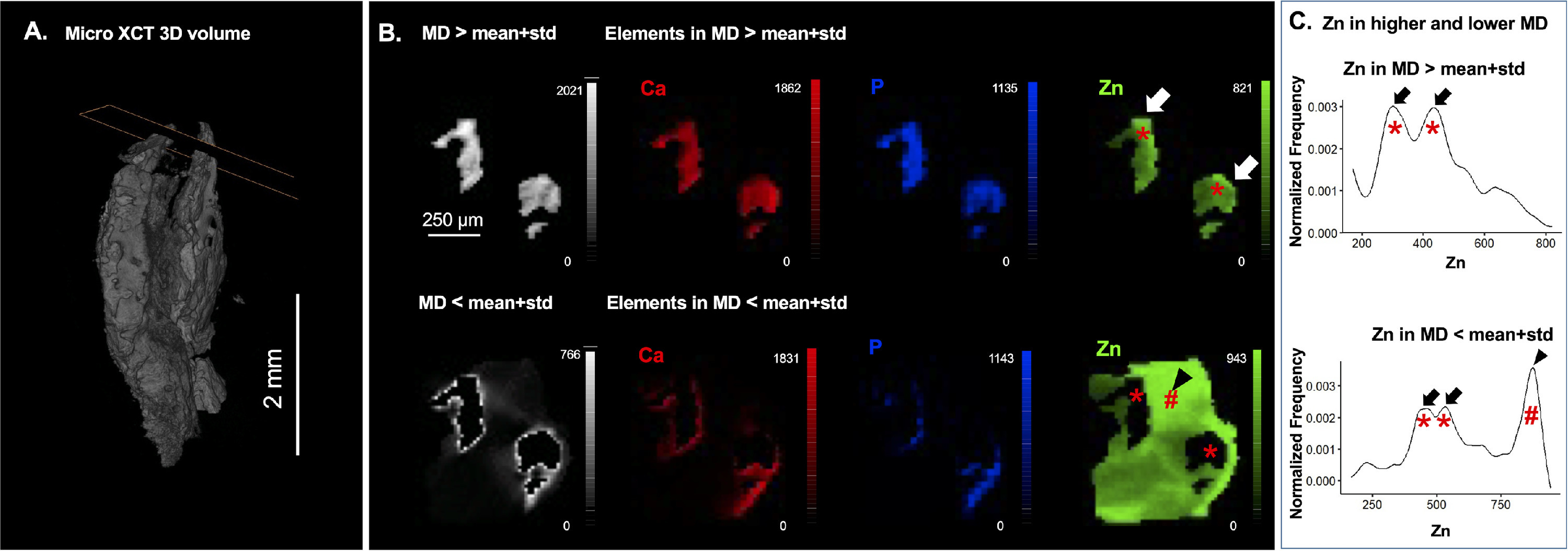Pathologic Biomineralization
What causes soft tissues to harden? Why do kidney stones form? There are various pathological diseases in which unwanted regions of the human body accumulate minerals and harden. We focused on mapping key ions, molecules, and proteins from cells that could promote the cascade of reactions resulting in compounds and unwanted biominerals. We tried to understand how mechanical strain impacted the susceptibility of a tissue to begin to mineralize; that is, the relationship between form and function of the material.

Mineralized Peyronie's plaque micro-CT (A) as well as spatial distribution of calcium, phosphorus, and zinc (B). Zinc was found to be localized at the hard-soft tissue interface!
Guided by various correlative microscopy techniques, we investigated a rare pathologic biomineralization process called Peyronie’s plaque. We aimed to understand if the plaque being formed was biochemically equivalent to bone, which has implications to its formation, as well as how possible mechanical strains could cause the mineralization process. We showed that mineralized Peyronie’s plaque was comprised of calcium and phosphorus, in ratios similar to bone, and that the surronding tissue had traces of zinc ions. The presence of zinc ions indicates various metalloproteins are present which are involved in the inflammation response, indicating a mechanical injury was suffered. Additionally, we noted that the mineralization process was likely mediated by cells, and not deposited like in the cases of pathologic biomineralization. All of this paves the way to understanding how to mitigate the change of mineralization occuring in the first place.
This work was performed under the guidance of Professor Sunita P. Ho during my time as a research fellow at UCSF.